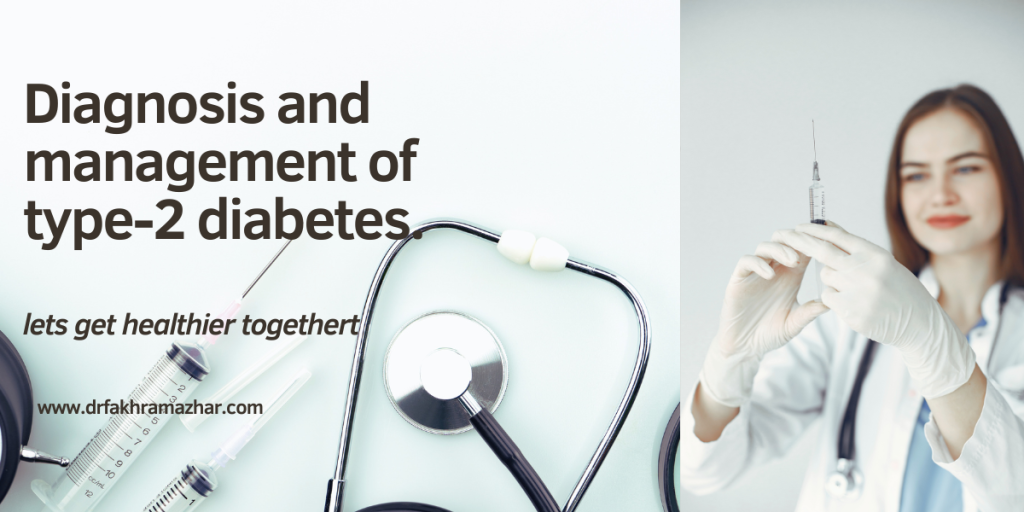
A metabolic disorder characterized by hyperglycemia and other accessory complications due to end-organ insulin resistance [ a hormone that normalizes blood glucose concentration ]. It is the most common type of diabetes mellitus that mainly affects adults, usually occurring after 40 years of age.
Diagnosis:
Diagnosis of diabetes includes measurement of plasma glucose concentrations during different body conditions. The diagnostic criteria of diabetes includes;
- Fasting blood glucose > 126 mg/dl
- Random blood glucose > 200 mg/dl
- glycated Haemoglobin > 6.5%
- Amyloid deposits in islets of langerhans
same diagnostic criteria is used to asses Type-1 Diabetes mellitus except amyloid deposits that are not usually seen in Type-1 Diabetes mellitus. have a quick look at Type-1 diabetes .
https://www.drfakhramazhar.com/diabetes-mellitus/
These tests except random blood glucose should be performed at a separate day and repeated to eliminate any ephemeral increase in blood glucose, due to certain hormones for example catecholamines and cortisols etc.
Causes of type 2 diabetes:
The main and foremost cause of Type-2 diabetes mellitus is insulin resistance. There is a sufficient or even high level of insulin in the body but cells and tissues can not utilise it, due to insulin resistance. So there is an initial rise in insulin level in the body but then insulin production decreases due to debilitation of pancreatic beta cells.
Clinical features:
Usually type-2 diabetes is a silent killer and the full blown symptoms of disease are not shown until the disease has progressed to detrimental levels. Some of the clinical signs are;
- Hyperglycemia
- Polydipsia
- Polyuria
- Glucosuria
Effects of type-2 diabetes on body:
- Atherosclerosis due to deposition of glucose in arteries.
- Cardiovascular diseases
- Peripheral neuropathy
- Amputations
- Cataracts in eyes
- Blindness
- Glomerulosclerosis
- Coma
- Polycystic ovarian syndrome in females
If you are an obese woman having diabetes mellitus then there are a high chances of developing PCOS. Have a glance at PCOS and its relation with Type-2 Diabetes by clicking at the link given below;
https://www.drfakhramazhar.com/polycystic-ovarian-syndrome/
Treatment:
- The first line treatment of type-2 diabetes is weight loss. Weight loss directly reverses the insulin resistance and its detrimental effects on the body. So control your diet and do exercise on a regular basis to lose weight.
- Drug therapy includes metformin to boost the effects of insulin on glucose utilisation.
- Exogenous insulin is given if beta cells have been exhausted.

2 Responses